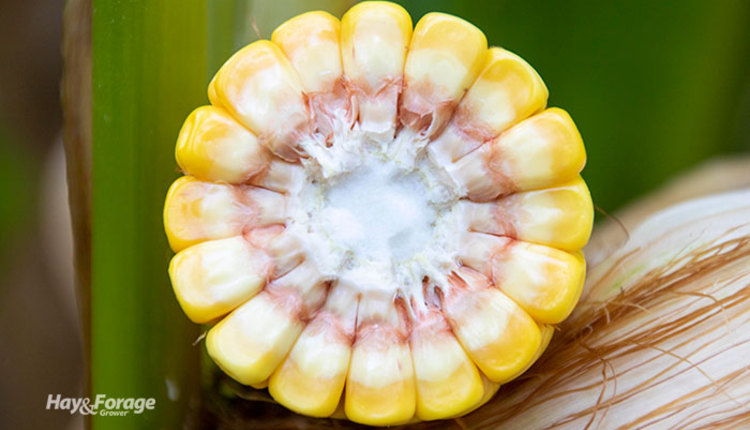
Proper fermentation begins with harvesting at the correct moisture level. However, hitting that moisture sweet spot can be a challenge, according to Joe Lauer, University of Wisconsin-Extension corn agronomist.
“Harvesting corn too wet for the storage structure will result in reduced yield, souring and seepage, and low animal feed intake; harvesting too dry reduces yield, can cause mold to develop, and lowers digestibility, protein, and vitamins A and E,” the agronomist explains.
Different types of storage structures require different moisture levels for proper fermentation as noted in the table below.

When harvesting corn silage, kernel milkline is not a reliable indicator of whole plant moisture level. Location, planting date, hybrid selection, and weather conditions affect both kernel milkline and whole plant dry matter.
Determining field harvest order will help you achieve correct harvest moisture levels. By keeping records of planting order and collecting whole plant samples to analyze for percent dry matter, farmers can better predict harvest dates.
Take samples
“The only reliable method of determining the optimal time to harvest corn silage is to sample the crop and directly measure the percent dry matter of whole plants,” Lauer notes.
He provides this procedure for measuring plant moisture:
1. Sample three to five plants in a row that are well bordered and representative.
2. Put the sample in a plastic bag.
3. Keep the plants cool.
4. Chop the sample as quickly as possible. This is usually done with a landscape chipper/shredder.
5. Measure moisture using NIR spectroscopy and/or by drying using a Koster oven, microwave, or convection oven.
Take the first samples shortly after full dent stage (80% kernel milk) for bunker silos and bags, at 60% kernel milk for conventional tower silos, and at 40% kernel milk for sealed (oxygen-limited) tower silos. Field variability will exist, so Lauer recommends sampling two or more locations in the field. Use these same locations if fields are sampled again.
“It is important to begin sampling early as a precaution against variation in dry down,” Lauer says. “You will likely be too wet, but you will have an indication of how quickly dry down is occurring when the next sampling date takes place.”
Estimate harvest date
With the current plant moisture level determined, this information can be combined with average whole plant dry-down rates and be used to roughly predict the proper time to harvest corn silage.
Lauer informs growers to use a dry-down rate of 0.5 percentage units per day during September to predict the date when a field will be ready to chop. For example, if a given field is determined to be at 70% moisture at the early sampling date, and the target harvest dry matter is 65%, then it will take about 10 days before the field is ready for harvest.
“If dry conditions exist, whole corn plants will dry faster than normal,” Lauer warns. “Conversely, if conditions are cool and wet, dry-down rates may be slowed. Corn silage that is slightly too dry is worse than corn silage that is slightly too wet. Therefore, starting harvest a little early is usually better than waiting too long,” he adds.
By using sample analyses and field records, farmers can predict the optimum corn silage harvest date. Making sure to harvest based on the correct moisture level for the storage structure being used will help ensure ideal conditions for crop fermentation.

C.J. Weddle is serving as the 2020 Hay & Forage Grower editorial intern. She currently attends Mississippi State University, majoring in agricultural education, leadership, and communications. She grew up on a farm in Vardaman, Miss., where her family raises sweet potatoes and soybeans.

